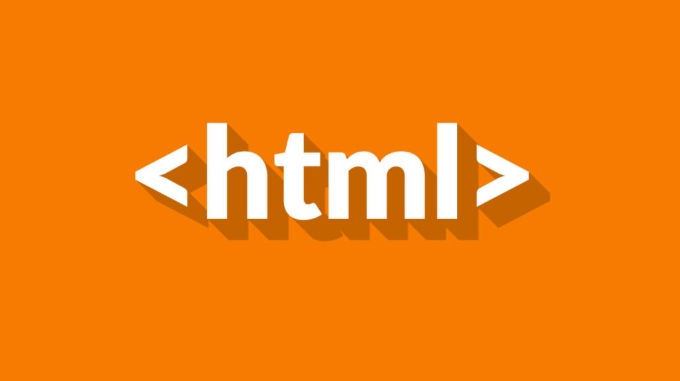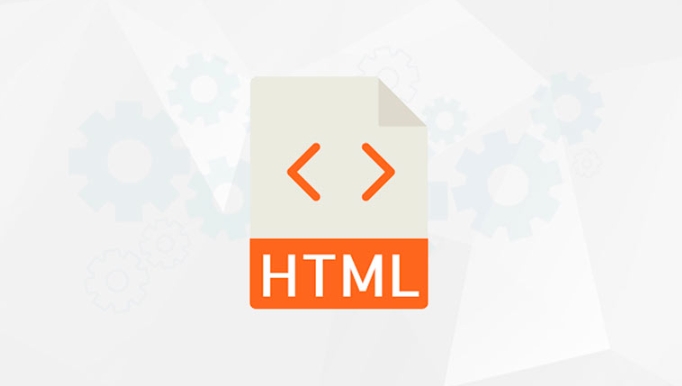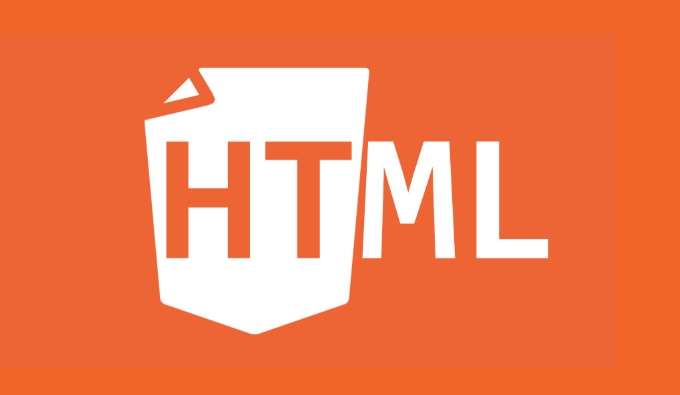The HTML tag is used to highlight text with semantic meaning. It differs from CSS styling by conveying intent to browsers and screen readers, such as marking search results, key points, or notes. 1. It enhances accessibility by being recognized by screen readers. 2. It can improve SEO by helping search engines understand context. 3. It makes HTML more readable and self-documenting. Common use cases include highlighting search terms, emphasizing changes, or marking important sentences. To use it, wrap text in tags and optionally style with CSS for better visual integration. Proper usage includes avoiding overuse, ensuring contrast, and focusing on meaningful highlights to maintain readability and accessibility.

If you want to draw attention to a specific part of your text on a webpage, the HTML <mark></mark> tag is a straightforward and semantically meaningful way to do it. Unlike using bold or italics just for visual effect, <mark></mark> tells both browsers and screen readers that the text is highlighted for a reason—like a search result, a key point, or a note.

Why Use <mark></mark> Instead of Just Styling with CSS?
You might be tempted to just use a <span></span> with a background color, but <mark></mark> comes with built-in semantics. That means it’s not just about how it looks—it’s about what it means. For example:
- Screen readers may announce marked text differently
- Search engines could potentially use it to better understand context
- It makes your HTML more readable and self-documenting
So while the visual result might look similar, using <mark></mark> adds a layer of meaning that plain styling doesn't.

Common Use Cases for <mark></mark>
You don’t need to overuse it, but there are a few practical situations where <mark></mark> really shines:
- Highlighting search terms in search results pages
- Marking important sentences in long articles
- Calling out changes or additions in a document
- Emphasizing corrections in user-generated content
For example, if someone searches for “HTML tags” on your site and you show results, wrapping that phrase in <mark></mark> helps them spot it quickly.

How to Use the <mark></mark> Tag
Using <mark></mark> is simple. Just wrap the text you want to highlight inside the opening and closing tags:
<p>This is a <mark>highlighted</mark> part of the sentence.</p>
By default, most browsers will display this with a yellow background, but you can customize the appearance with CSS:
mark {
background-color: #ffdd00;
color: #000;
padding: 2px 4px;
border-radius: 3px;
}This way, you can make your highlights stand out more or match your site’s design.
Accessibility and SEO Considerations
Accessibility tools do recognize <mark></mark>, so it's a good idea to use it thoughtfully:
- Don’t overdo it—too many highlights reduce readability
- Avoid using it for decorative purposes only
- Make sure the contrast between text and background is sufficient
From an SEO standpoint, while it’s not a major ranking factor, using semantic HTML helps search engines better understand your content. That can lead to better indexing and richer snippets in search results.
Basically, <mark></mark> is a small but meaningful tag that can make your content more usable and accessible. It doesn’t take much effort to use it, but it does make a difference when applied appropriately.
The above is the detailed content of The HTML `mark` Tag for Highlighted Text. For more information, please follow other related articles on the PHP Chinese website!

Hot AI Tools

Undress AI Tool
Undress images for free

Undresser.AI Undress
AI-powered app for creating realistic nude photos

AI Clothes Remover
Online AI tool for removing clothes from photos.

Clothoff.io
AI clothes remover

Video Face Swap
Swap faces in any video effortlessly with our completely free AI face swap tool!

Hot Article

Hot Tools

Notepad++7.3.1
Easy-to-use and free code editor

SublimeText3 Chinese version
Chinese version, very easy to use

Zend Studio 13.0.1
Powerful PHP integrated development environment

Dreamweaver CS6
Visual web development tools

SublimeText3 Mac version
God-level code editing software (SublimeText3)
 Applying Semantic Structure with article, section, and aside in HTML
Jul 05, 2025 am 02:03 AM
Applying Semantic Structure with article, section, and aside in HTML
Jul 05, 2025 am 02:03 AM
The rational use of semantic tags in HTML can improve page structure clarity, accessibility and SEO effects. 1. Used for independent content blocks, such as blog posts or comments, it must be self-contained; 2. Used for classification related content, usually including titles, and is suitable for different modules of the page; 3. Used for auxiliary information related to the main content but not core, such as sidebar recommendations or author profiles. In actual development, labels should be combined and other, avoid excessive nesting, keep the structure simple, and verify the rationality of the structure through developer tools.
 Implementing Clickable Buttons Using the HTML button Element
Jul 07, 2025 am 02:31 AM
Implementing Clickable Buttons Using the HTML button Element
Jul 07, 2025 am 02:31 AM
To use HTML button elements to achieve clickable buttons, you must first master its basic usage and common precautions. 1. Create buttons with tags and define behaviors through type attributes (such as button, submit, reset), which is submitted by default; 2. Add interactive functions through JavaScript, which can be written inline or bind event listeners through ID to improve maintenance; 3. Use CSS to customize styles, including background color, border, rounded corners and hover/active status effects to enhance user experience; 4. Pay attention to common problems: make sure that the disabled attribute is not enabled, JS events are correctly bound, layout occlusion, and use the help of developer tools to troubleshoot exceptions. Master this
 Configuring Document Metadata Within the HTML head Element
Jul 09, 2025 am 02:30 AM
Configuring Document Metadata Within the HTML head Element
Jul 09, 2025 am 02:30 AM
Metadata in HTMLhead is crucial for SEO, social sharing, and browser behavior. 1. Set the page title and description, use and keep it concise and unique; 2. Add OpenGraph and Twitter card information to optimize social sharing effects, pay attention to the image size and use debugging tools to test; 3. Define the character set and viewport settings to ensure multi-language support is adapted to the mobile terminal; 4. Optional tags such as author copyright, robots control and canonical prevent duplicate content should also be configured reasonably.
 Best HTML tutorial for beginners in 2025
Jul 08, 2025 am 12:25 AM
Best HTML tutorial for beginners in 2025
Jul 08, 2025 am 12:25 AM
TolearnHTMLin2025,chooseatutorialthatbalanceshands-onpracticewithmodernstandardsandintegratesCSSandJavaScriptbasics.1.Prioritizehands-onlearningwithstep-by-stepprojectslikebuildingapersonalprofileorbloglayout.2.EnsureitcoversmodernHTMLelementssuchas,
 How to associate captions with images or media using the html figure and figcaption elements?
Jul 07, 2025 am 02:30 AM
How to associate captions with images or media using the html figure and figcaption elements?
Jul 07, 2025 am 02:30 AM
Using HTML sums allows for intuitive and semantic clarity to add caption text to images or media. 1. Used to wrap independent media content, such as pictures, videos or code blocks; 2. It is placed as its explanatory text, and can be located above or below the media; 3. They not only improve the clarity of the page structure, but also enhance accessibility and SEO effect; 4. When using it, you should pay attention to avoid abuse, and apply to content that needs to be emphasized and accompanied by description, rather than ordinary decorative pictures; 5. The alt attribute that cannot be ignored, which is different from figcaption; 6. The figcaption is flexible and can be placed at the top or bottom of the figure as needed. Using these two tags correctly helps to build semantic and easy to understand web content.
 HTML for email templates tutorial
Jul 10, 2025 pm 02:01 PM
HTML for email templates tutorial
Jul 10, 2025 pm 02:01 PM
How to make HTML mail templates with good compatibility? First, you need to build a structure with tables to avoid using div flex or grid layout; secondly, all styles must be inlined and cannot rely on external CSS; then the picture should be added with alt description and use a public URL, and the buttons should be simulated with a table or td with background color; finally, you must test and adjust the details on multiple clients.
 What are the most commonly used global attributes in html?
Jul 10, 2025 am 10:58 AM
What are the most commonly used global attributes in html?
Jul 10, 2025 am 10:58 AM
class, id, style, data-, and title are the most commonly used global attributes in HTML. class is used to specify one or more class names to facilitate style setting and JavaScript operations; id provides unique identifiers for elements, suitable for anchor jumps and JavaScript control; style allows for inline styles to be added, suitable for temporary debugging but not recommended for large-scale use; data-properties are used to store custom data, which is convenient for front-end and back-end interaction; title is used to add mouseover prompts, but its style and behavior are limited by the browser. Reasonable selection of these attributes can improve development efficiency and user experience.
 How to handle forms submission in HTML without a server?
Jul 09, 2025 am 01:14 AM
How to handle forms submission in HTML without a server?
Jul 09, 2025 am 01:14 AM
When there is no backend server, HTML form submission can still be processed through front-end technology or third-party services. Specific methods include: 1. Use JavaScript to intercept form submissions to achieve input verification and user feedback, but the data will not be persisted; 2. Use third-party serverless form services such as Formspree to collect data and provide email notification and redirection functions; 3. Use localStorage to store temporary client data, which is suitable for saving user preferences or managing single-page application status, but is not suitable for long-term storage of sensitive information.






